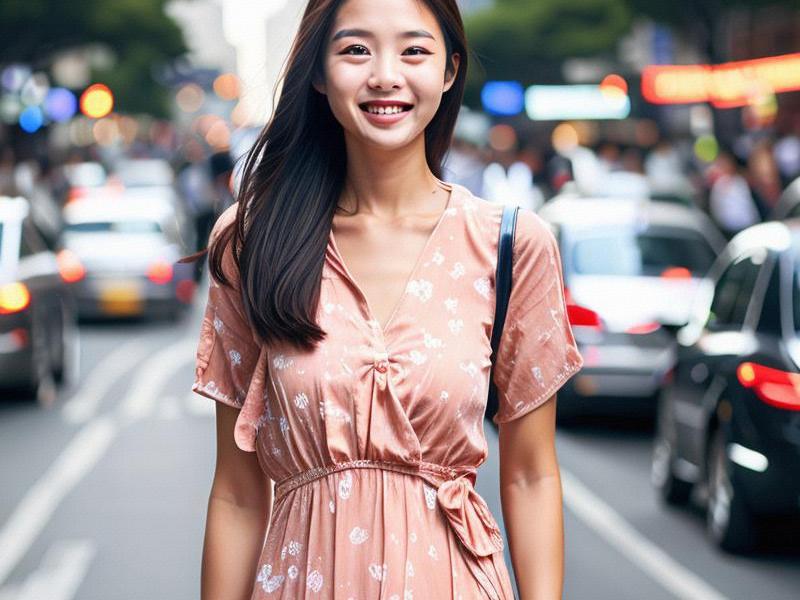
In the heart of China, where the Huangpu River meets the bustling metropolis of Shanghai, a unique cultural phenomenon has emerged, capturing the attention of the world. This is the story of the "Shanghai Beauties," a term that encapsulates not just physical beauty but also a sophisticated urban style and a deep-rooted cultural influence. The Shanghai Beauty is not merely a product of modern fashion; she is a living embodiment of the city's rich history, its rapid transformation, and its global aspirations.
The concept of the Shanghai Beauty has evolved over the decades, reflecting the changing tides of Chinese society and the city's unique position as a bridge between the East and the West. In the early 20th century, Shanghai was known as the "Paris of the East," a cosmopolitan hub where Chinese and Western cultures交融融合 (fused/fused together) (fused). This fusion gave birth to a new ideal of beauty that combined traditional Chinese elegance with Western sophistication. Women in Shanghai, known as "Shanghai Girls," were celebrated for their grace, charm, and fashion sense, setting trends that influenced not only China but also the world.
The 1920s and 1930s were particularly significant in shaping the image of the Shanghai Beauty. During this period, Shanghai was a center of cultural and artistic activity, attracting writers, artists, and intellectuals from all over the country. The city's nightclubs, theaters, and cabarets were the stages where the Shanghai Girls would showcase their beauty and style. They were often depicted in literature and film as independent, cosmopolitan women who were unafraid to challenge societal norms.
One of the most iconic representations of the Shanghai Beauty was the "旗袍 (qipao)" (cheongsam), a traditional Chinese dress that was modernized in Shanghai. The qipao, with its high collar, fitted silhouette, and slits, became a symbol of feminine elegance and sophistication. Designers in Shanghai reimagined the qipao, incorporating Western fashion elements such as silk stockings, high heels, and jewelry. This fusion of Eastern and Western styles not only enhanced the beauty of the qipao but also made it a global fashion statement.
上海龙凤419杨浦 The rise of the Shanghai Beauty was not limited to fashion; it also extended to lifestyle and culture. Shanghai Girls were known for their love of art, music, and literature. They frequented tea houses, where they would listen to traditional Chinese music or enjoy Western jazz. They were also avid readers, with many of them being well-versed in classical Chinese literature and Western philosophy. This intellectual curiosity and cultural awareness set them apart from their contemporaries and contributed to their enduring appeal.
However, the golden age of the Shanghai Beauty came to an abrupt end with the outbreak of the Second Sino-Japanese War in 1937. The Japanese occupation of Shanghai and the subsequent turmoil of the Chinese Civil War disrupted the city's cultural and economic stability. The image of the Shanghai Beauty, once a symbol of hope and modernity, became associated with the hardships and struggles of wartime.
After the founding of the People's Republic of China in 1949, the cultural landscape of Shanghai underwent significant changes. The city's cosmopolitan identity was replaced by a more conservative and collectivist ethos. The qipao, once a symbol of female empowerment and fashion, was criticized as being too revealing and was gradually phased out in favor of more modest clothing. The Shanghai Beauty, as a cultural icon, seemed to fade into obscurity.
上海夜网论坛 It was not until the economic reforms of the late 1970s and the subsequent rise of Shanghai as a global financial hub that the image of the Shanghai Beauty was revived. The city's rapid modernization and increasing globalization brought with it a renewed interest in its cultural heritage. The Shanghai Beauty, now reimagined in the context of contemporary fashion and urban life, once again became a symbol of elegance and sophistication.
In the 21st century, the Shanghai Beauty is no longer confined to the streets of Shanghai. She has become a global phenomenon, influencing fashion, beauty, and lifestyle trends around the world. The city's fashion designers, many of whom are young and innovative, continue to draw inspiration from the fusion of Eastern and Western styles. They reinterpret traditional Chinese elements in a modern context, creating designs that are both unique and universally appealing.
The Shanghai Beauty is also a symbol of the city's resilience and adaptability. In the face of rapid urbanization and globalization, Shanghai has managed to preserve its cultural identity while embracing change. The city's museums, art galleries, and cultural festivals celebrate its rich history and diverse influences, providing a platform for artists and designers to showcase their work.
上海品茶论坛 The global impact of the Shanghai Beauty is evident in the increasing popularity of Chinese fashion and beauty brands. International fashion houses have recognized the potential of the Chinese market and have collaborated with Chinese designers to crteeacollections that appeal to a global audience. At the same time, Chinese brands are expanding their reach beyond the domestic market, establishing a presence in major fashion capitals around the world.
The Shanghai Beauty is not just a fashion icon; she is a cultural ambassador who represents the spirit of Shanghai and China. Her story is a testament to the city's ability to blend tradition with modernity, to innovate while preserving its heritage. As Shanghai continues to grow and evolve, the image of the Shanghai Beauty will undoubtedly continue to inspire and captivate the world.
In conclusion, the Shanghai Beauty is a multifaceted phenomenon that encompasses fashion, culture, and history. She is a symbol of the city's rich cultural heritage and its dynamic transformation. The revival of the Shanghai Beauty in the 21st century is a reflection of Shanghai's global aspirations and its role as a cultural and fashion leader. As the world becomes increasingly interconnected, the influence of the Shanghai Beauty will only continue to grow, solidifying her place as a timeless icon of beauty and sophistication.
